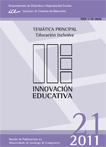Creation of Photographic Atlas of Botany, Flora, Vegetation and Landscapes for the improvement of the teaching-learning process in subjects of the degrees of Biology and Environmental Sciences
Main Article Content
Abstract
The results obtained in two Educational Innovation Projects of the University of Malaga (PIE10-013 and PIE13-047) are shown. They have been developed in two official degrees (Biology Degree and Environmental Science Degree) and in a total of six subjects belonging to the same area of knowledge (Botany). The main objectives were the creation of Virtual Atlas of Botany, Flora and Vegetation, and their practical application by questionnaires in the Virtual Campus. These atlas are published on the website of the Department of Botany and Plat Physiology of this university. The Atlas of Botanical Practices consists of 10 folders, each of them corresponding to different plant groups, and a total of 482 pages of composition of photographic images. Currently, the Atlas of Flora has more than 1000 photographs, and it includes alphabetical indexes of taxa (775) and families (111), each with its corresponding link to the image page. It constitutes, therefore, a fast and practical image search engine for plants, also supported by experienced university professors, for which it presents scientific quality. The Atlas of Vegetation has about 500 pages of photographic images, divided into four blocks: Forests (137), Scrub (86), Riparian Communities (67) and Other Communities (103). An ordered and numbered index is included for each, in order to facilitate the search of certain plant communities, as well as to know their identity and classification. Atlas of Landscapes and Angiosperms-Flowers have also created. All contribute substantially to improve the teaching-learning process in several subjects of the degrees of Biology and Environmental Sciences. Its use and application in evaluation tests avoids the overload of work for teachers.
Keywords:
Article Details
References
Blanca, G., Cabezudo, B., Cueto, M., López C.F. y Morales Torres, C. (eds.) (2011). Flora Vascular de Andalucía Oriental (2ª edición corregida y aumentada). Universidades de Granada, Almería, Jaén y Málaga.
Cabezudo, B. y Trigo, M. M. (2004). Pteridófitos (helechos y plantas afines). En: G. Blanca-López y A. ortega-Díaz (Coords.), Proyecto Andalucía, Naturaleza vol. XXI, Botánica II (pp. 315374). Sevilla: Hércules.
Recio, M. (Coord.), Altamirano Yeschke, M., Asensi Marfil, A., Cabezudo, B., Díez Garretas, B., Flores Moya, A., Navarro del Águila, T., Nieto Caldera, J. M., Pérez Latorre, A. V., Toro Gil, F. J. y Trigo Pérez, M. M. (2008). Manual y Guión de Prácticas de Botánica. Elementos Auxiliares del Clase, (81). Servicio de Publicaciones e Intercambio Científico de la Universidad de Málaga (SPICUM).
Soltis, D.E. et al. (2000). Angiosperm phylogeny inferid from 18SrDNA, rbcL and atpB sequences. Botanical Journal of Linnean Society, 133(4), 381-461. DoI: https://doi.org/10.1006/ bojl.2000.0380
The Angiosperm Phylogeny Group (2003). An update of the Angiosperm Phylogeny Group classifications for the orders and families of flowering plants: APG II. Botanical Journal of Linnean Society, 141(4), 399-436. DoI: https://doi.org/10.1046/j.1095-8339.2003.t01-1-00158.x







